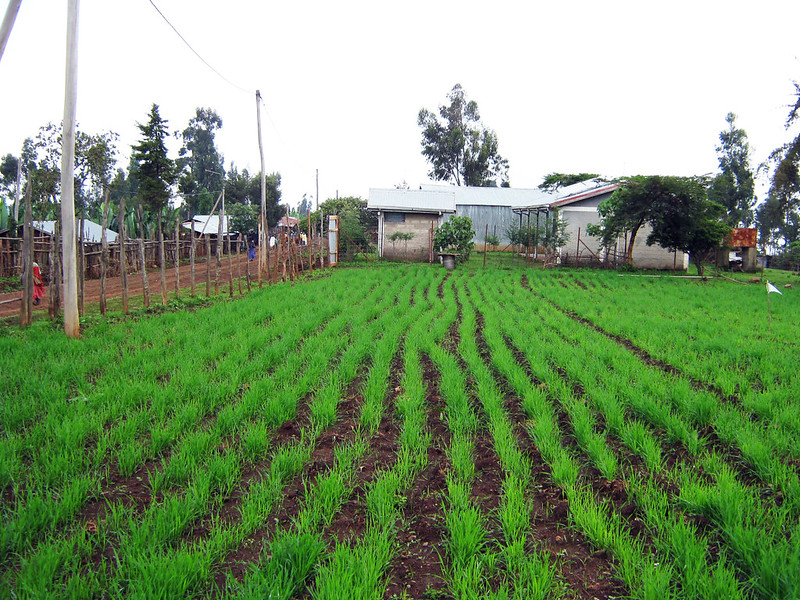
Timothy Wanjela all smiles as he admires his acre of lush greening and well-arranged field of wheat. The crop used to be poor, strangled by grassy weeds that the farmer had been unable to control.
For many years, Wanjela broadcast wheat seeds and was challenged by weed problems and low yields. His wheat grew side by side with grassy weeds, which competed for nutrients. “I lost time managing the grassy weed. It took me a long time to separate the wheat crop from the weeds,” he said.
Like many small-scale farmers in the area, he did not know that planting in rows could help solve his weed problem. Then he attended a session at the local Farmers’ Training Centre and was introduced to the technique of row planting. He planted his next wheat crop in rows, leaving about 30 centimeters between each row. “All the grassy weeds that germinate between the rows can be easily removed by hand. It takes less time and little effort. My children are helping me because it is easy to separate the grassy weeds from the wheat,” he said.
Related News: Rising wheat prices provides market opportunities for tuber farmers
Related News: Kenya’s bread stays foreign on local wheat challenges from bird attacks to subsidized imports
Kenyan farmers have traditionally broadcast cereal crops. But now the government and other partners are promoting row planting to help farmers more easily manage weeds. The increased yields from reducing competition for nutrients may help to reduce food insecurity in the country.
Local crop production experts say that farmers often lose about half of their potential cereal yield to weeds. Derrick Warima one such expert says: “Farmers face difficulties in controlling grassy weeds because they look like wheat. Farmers who have applied the technique of row planting this year have the chance to control these grassy weeds more easily.’’
Warima is an expert in extension development and in scaling up best practices. He tells farmers that when cereal seeds are broadcast, weedy grasses rob the crops of sunlight, water, and nutrients. But, he says, “In row planting, where fertilizer and seeds are mixed together and planted in rows … the grassy weeds lack fertilizer, and as a result, they become thin and almost disappear.’’
Related News: How to control aphids in wheat
Agatha Wahiuhiu another small-scale farmer who adopted row planting is all praises. He says it is better than broadcasting because he can now differentiate quite easily between the weeds and the crop. He explains: “Last year, I was here the whole season weeding. But … it is now simple to manage the grassy weeds.”
She is confident that his yields will increase. She says, “I have decided to plant my whole farmland in rows next year.”